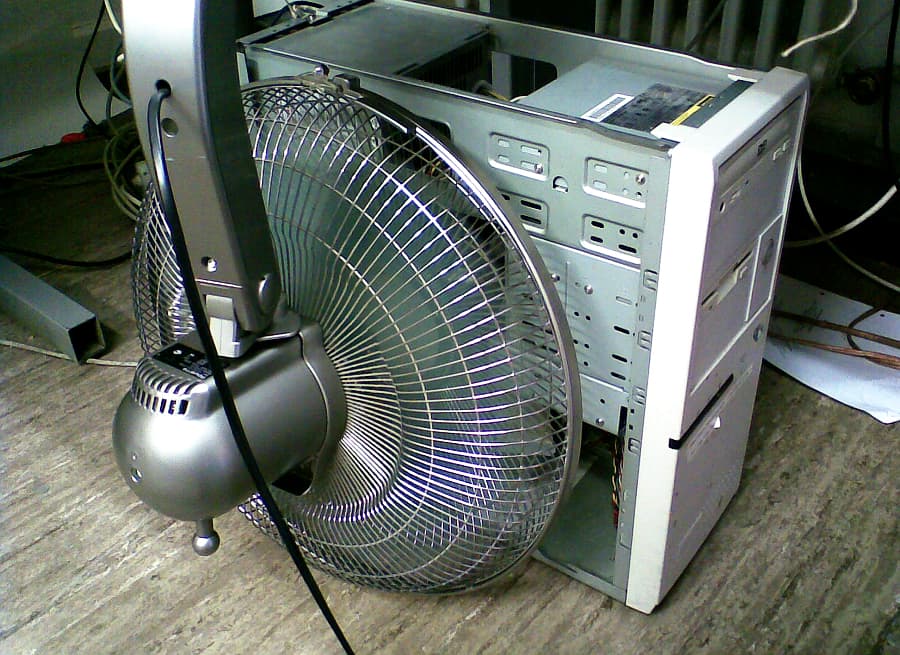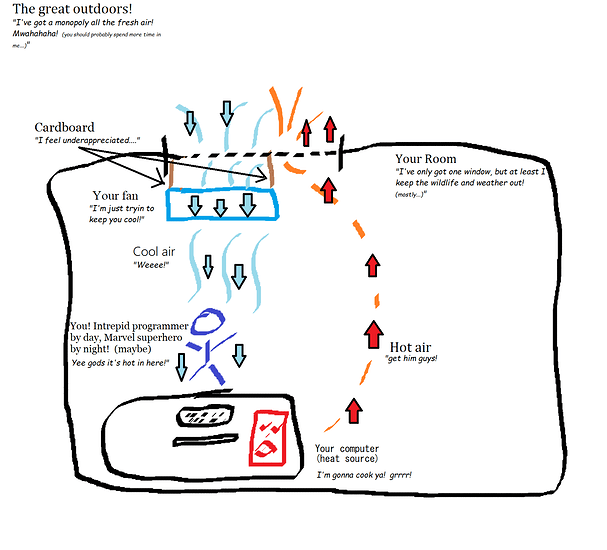Reduce backlight/brightness on the monitor. If you can choose/change monitor get one with local dimming array or a mini led and use dark themes.
Undervolt/underclock, or turn-off the desktop, turn off any LED, (code on laptop + monitor only).
Fans can actually use a substantial amount of power and all they do is shift warm/cold air around and add noise - getting a lower CPU temp by increasing the fan speed won’t get the room temperatures down.
And as far as non-desktop stuff, go for the usual, open shutters and blinds after sunset/before sunrise and at night, close during the day - rotate open windows so that ones that are open are in the shade.
Fans shift air around, and mix humid and/or warm air with colder. If you can make drafts around the house. How windy is it outside typically?) those tend to be more effective than fans. (and you get more oxygen to breathe which will make you feel better and code smarter™)
If you have a humidity sensor, and it’s showing 60% or higher, that may be uncomfortable, 35-40% is still healthy, you may find yourself reaching for water more often. There’s no way to dehumidify air without adding more heat / using power and if it already feels too warm, a small indoor dehumidifier is not the way to go. If outdoor humidity is lower than indoor, even if it’s 33⁰C outdoor, ventilate.
And then, take cold/luke warm showers to destress, go for afternoon relaxing walks bring an audiobook, rearrange meetings to make it happen and feel better - I have no idea what else you could do.
m1 are crazy efficient, my mom got a new MacBook Air and I was remoted into her machine while using her webcam and microphone to talk to her and was installing things and setting things up and at one point near the end of all that, the soc temp was 27⁰C and her room was 20⁰C. The MacBook Air is fanless (ironically  ).
).
If you can work off of a 16" MacBook Pro (no external monitors or keyboards), that’d be awesome.
I’m not sure what kind of development you do, but obviously if you can rent hosts or remote into hosts to do building and testing remotely, instead of locally, that could be a useful option sometimes, vscode is great for this type of thing.



